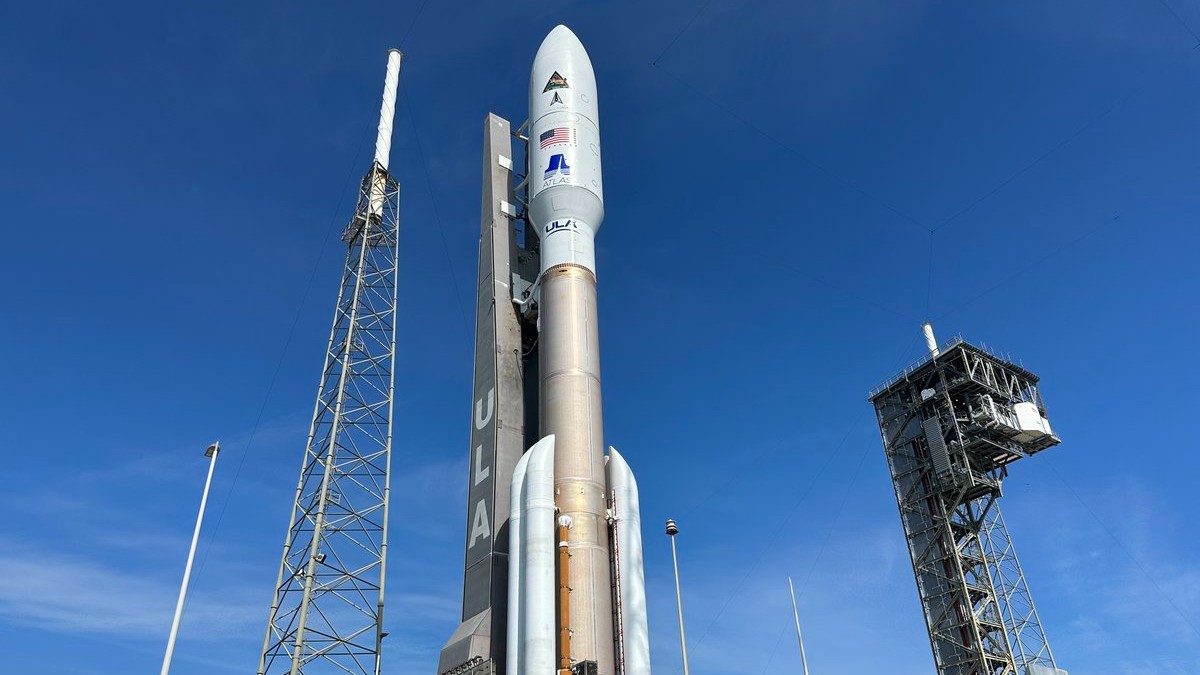Atlas V rocket rolled to pad for 2nd time for 'Silent Barker' spysat launch (photos)

An Atlas V rocket and its spysat payload are back on the launch pad again.
United Launch Alliance (ULA) rolled the Atlas V — which is topped with multiple classified payloads for "Silent Barker," a joint mission of the U.S. Space Force and the National Reconnaissance Office — out to Space Launch Complex 41 at Cape Canaveral Space Force Station in Florida today (Sept. 7)
The rocket is scheduled to launch on Saturday (Sep. 9) at 8:51 a.m. EDT (1251 GMT). You can watch it live here at Space.com, courtesy of ULA.
Related: Facts about ULA's workhorse Atlas V rocket
It was the second rollout in support of Silent Barker: The Atlas V first made the trek to the pad on Aug. 25 ahead of a planned Aug. 29 liftoff.
That attempt, however, was called off due to the effects of Tropical Storm Idalia. And, to protect the rocket and its hush-hush payloads from the maelstrom, ULA rolled the Atlas V back to its vertical integration facility at Cape Canaveral on Aug. 28.
Silent Barker will send multiple satellites up to keep an eye on activity in geosynchronous orbit (GEO), which lies about 22,200 miles (35,700 kilometers) above Earth.
Breaking space news, the latest updates on rocket launches, skywatching events and more!
At that altitude, satellites orbit Earth in the same amount of time it takes our planet to complete one rotation. That means they "hover" over the same patch of ground, making GEO a population destination for telecommunications and Earth-observation craft.
We don't know how many satellites Silent Barker will loft, or what exactly they will do. But one of their mission objectives is to "deter aggression," Space Force officials have said.
"A huge element of deterrence is the ability for the adversary to know what we can and cannot see," Space Force Lt. General Michael Guetlein, commander of Space Systems Command, said in a teleconference with reporters on Aug. 28. "So we actually want our competitors to know that we have eyes in GEO and that we can see what's happening in GEO."

Michael Wall is a Senior Space Writer with Space.com and joined the team in 2010. He primarily covers exoplanets, spaceflight and military space, but has been known to dabble in the space art beat. His book about the search for alien life, "Out There," was published on Nov. 13, 2018. Before becoming a science writer, Michael worked as a herpetologist and wildlife biologist. He has a Ph.D. in evolutionary biology from the University of Sydney, Australia, a bachelor's degree from the University of Arizona, and a graduate certificate in science writing from the University of California, Santa Cruz. To find out what his latest project is, you can follow Michael on Twitter.

